THE ENTREPRENEURIAL MINDSET

SEE ALSO:
A NEW MEDICAL ROBOTICS PLATFORM CAN DETECT LUNG CANCER MORE ACCURATELY


A NEW MEDICAL ROBOTICS PLATFORM CAN DETECT LUNG CANCER MORE ACCURATELY
Midcohas bigplans foryou andyouronlinelife.We’re investing$500 millioninour communitiestobringthebest of 10Gright to your door,allowingyou to experiencea seamlesslyconnectedsmartworld.

Underthe wing of 10G .
OurFiber ForwardSM initiative will notonlystrengthen our connectionwitheachother,butalso contributeto enhancedeconomicdevelopment, education andquality of life.We’re powering your work ,study,streaming,gaming–allyoudoonline.
Readytoliftoff,North Dakota?
Buckle up.It’stimetosoartoa newlevel.
150,000$100M 27

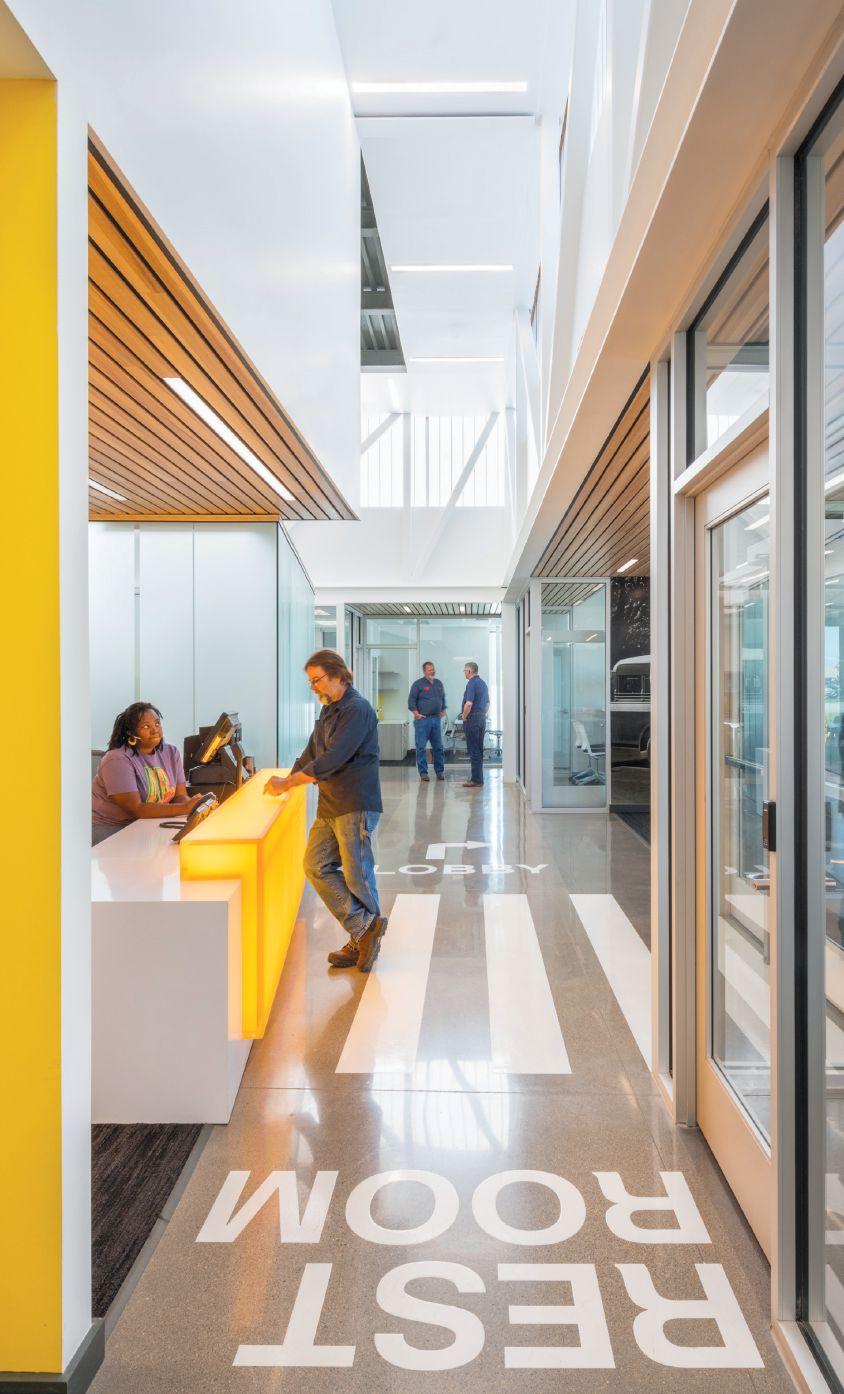
Af te r87y ea rs of ser vi ce ,G ra nd Fo rk sC it ie sA re aT ra ns it (C AT ) en vi si on ed an ew,v ib ra nt wo rk pl ac e bu il tto“ dri ve ”e ff ic ie nc ya nd ener gi ze th ep eo ple wi th in it sw all s. Wh ile bu st ra ns it is CAT’sp urp os e, it sp eo plear et he re as on th ew he el s ke ep sp innin g. CATr ei mag in edthei r 19 84 st ru ct ur etoc re at eaf ut ur ere ady tr ansi tf ac il it yt ha tc elebr at ed thei rp ast fe at uri ng ad ayli t, ope n fl oo rp la nt ha te nh an ce st he ir cu lt ur ea nd prov id es sp ac etog ro w while re du cin ge ne rg yu se an d co ns tr uctio nc os t. At th ec or eisa n im me rs iv ee xperie nc eofr aw st ee l, hi st or ictr an si ts up er -g ra phics ,a nd tr ansp or ta tio n- inspir ed sign ag et ha t eas es na viga tio na ro un dt heloop “roa d”th at co nn ec ts de pa rt me nt s— cr eati ng aw elcom in gp at hf or both em pl oy ee sa nd vi si to rs



An yo ne ca nc re at eab uild in gt o ho us eb us es ,b ut CA Tr ed ef in ed civi ca rc hi te ct ur e, d r iv in ga vi br an t en vi ro nm en tt ha tr ef le ct si ts le ga cy while ce le br at in gt hepe op le wh o stee ri ts fu tu re



At at im ew he nh irin ga ndre ta inin gq ua li ty em pl oy ee sisa ch all en ge ,s om eb us in es se sa re fi nd in gs uc ce ss by fo cu si ng on emplo ye efi na nc ia lw el lness, no tj ust sa la ries (a lt ho ug ht ho se are import an ttoo). Th is st ra te gy ca nn ot on ly boo st re cr ui tm en ta nd re te ntione ffor ts but al so improvee mplo ye epro du ct iv it y. Af te ra ll, fin anci al conc er ns arealea din gc au seof st ress an dd ist ra ct ion for worke rs ,w hich ca ns pi ll into work in ghou rs.
Bu si ne ss es ca nh el pe mp lo ye es ac hi ev ef inan ci al we ll ne ss by pa rt ne ri ng wi th bu si ne ss ad vi so rs an db en ef it sp ro vi de rs who ma ke we ll ne ss af oc us .T he se pr og ra ms of fe ro ne -o n- on ea nd gr oups es si on stog ui de emplo ye es, alon gw it htools th ey ca nu se to mana ge th ei ri ndiv id ua lg oa ls an dp ro gr ess, he lp in gw or ke rs ta ke controla nd ga in co nfi de nc ew it ho ut requ irin gt he employ er to mana ge thepro gr am s.
Pe opl eh av et he be st of in te ntion sw he nitc om es to fi na nc ial we ll ne ss bu to ften fa ll ju st sh or toft ak in ga ct io n. Empl oy er sc an he lp overcome iner ti ab ym ak in gi teas ytoe ng age–let employees ta lk wi th ad vi so rs du ri ng bu si ne ss hou rs ,o ff er vi rt ua lm ee ti ng s, andrew ardp ar ticipation .D on’t forget thei mp or ta nc eofe ducation in fi na nc ia lw el ln ess. Con si de rr ec or di ng fi na nc ia le du ca ti on session ssoe mplo ye es ca nv ie wt he mw he ni t’sc onve nient.
On eoft he ha rd es tf inan ci al we ll ne ss go al sf or ma ny peo ple to ac hi ev eisb ui ld in ge me rg en cy sa vi ng s. Em plo ye rsca nh elp encour aget he ir employee stosavebyc ho osin gafi na nc ia lwel lness pro gr am th at in cl udes th eo pt io nf or em pl oy ee stoe st abl ish emer ge nc ys av in gs ac co un ts .T he se ac co un ts ma yo ff er ah ig her yi el dift he ac co un to wn er dep os it sf un ds on ar eg ul ar basi sa nd le ts it bu ildup. He lpin ge mplo ye es se tupautom atic dep os it sf rom thei rp aychec km akes it even ea sier fort he mtos ave.
Employee intere st in health ,d isabil it y, an dl ifei nsurance ha sspi ked


TheCOV ID -19pandemicrai sedawa reness andi nteres tina llty pesof in su ra nc e. Ma ny worker stooka closer lookat thei rhea lt hi nsurance andb ec ame moresav vy ab outc ompa ri ngof fe ri ngs.Meanwhile, it al so be ca me read il yapp ar enttom anyw hy sa fe ty ne ti ns urance, li ke li fe i ns ur ance or lon g-te rm d is abil it y co ve rage, is s o va lu able Employersshou ldreexaminet heir of feri ngsa nd consider of feri ng or promoti ng thesebenefits as pa rt of acomplete pac kage.
Ma nage dacc ou nt progra ms prov ide person al ized re ti rements trateg ies
Re ti rement ac counts ares ti ll one of themos tv is ible an datt ra ct ive be ne fit sf or empl oy ee s,but li ke all as pe ct soffi na nc ia lw el ln ess, they ne ed to be us ed prop erly to have thedes ired impact .M an aged ac co un ts al lo wp ar ti ci pa nt stop ri or it iz et he ir re ti re mentgo als an dr ece ive pers on al iz ed st ra te gies, ma ki ng it ea sy to ta ke ac ti on an dn av ig ate re ti re me ntpl anni ng wi th co nfi de nc e.
Ma ke financi al we ll ne ss ea sy for bu si ne sses to ad mi ni ster,too
Ma ki ng it ea sy to ta ke ac ti on ap plie stoe mp lo ye rs ,t oo .O ff er ing af in an ci al we ll ne sspr og ra ms ho ul dbease as yt os et up and ad mini st er as it is to us e. For tu na te ly,t he tr en dt ow ar ds au tomation, on lines el f- se rv ep or ta ls ,a nd re mo te as si st ance from profe ssion al sa llow sb usinessowner sa nd ad mini st rator st he sa me ki nd of conv en ie nc ea nd ti me -s av in gs thep ro gr am is desi gned to de li ve rfor worke rs.
At Al er us ,d el iv er in gh ol is ti cf in an ci al we ll ne ss is pa rt of our mi ssion .Weh aveb ee ni nnov at in gour of fe ri ng sove rt he year s, and li ke ma ny or ga ni za ti on swem ad eam aj or in ve st ment indi gi tal en ga gement an dtec hn olo gy du ri ng th eCOV ID -19p an de mi c. We no wo ffer more webi nars ,r emotemee ti ng s, an donl inetools than ev er bef ore .Tal ktoo ne of ou rb en efits sp ecia li st stol ea rn more ab ou to ur workpl ac ef inan ci al we ll ne ss of fe ri ng sa nd ho wt hey ca nh elpy ou rb us in es sa nd em plo ye es th ri ve to ge th er.
Th ei nf or ma ti on co nt ain ed he re in is gene ra linn at ur e, is pro vi de df or in form at ion al pu rp oses on ly an di sn ot in te nde dtop ro vi de sp ec ifi ca dv ic eorr eco mm en da ti on sf or anyi nd iv idu al andshouldnotbecon st rued as lega lortax advice.A leru sdoesnot providelega lortax advice.A lw ayscon sult an at tor neyortax professiona lregardingyou rspeci ficlega lortax situat ion. Inve st me nt an di ns uran ce produc ts:1)N ot FDIC In su re d2)N oB an kGua ra nt ee 3) MayL ose Va lue

creating
observehow thenatural lighttransforms yourspace
experience thefootprint whileexploring eacharea
viewhow yourfurniture looks, feels, and fitsinyourspace
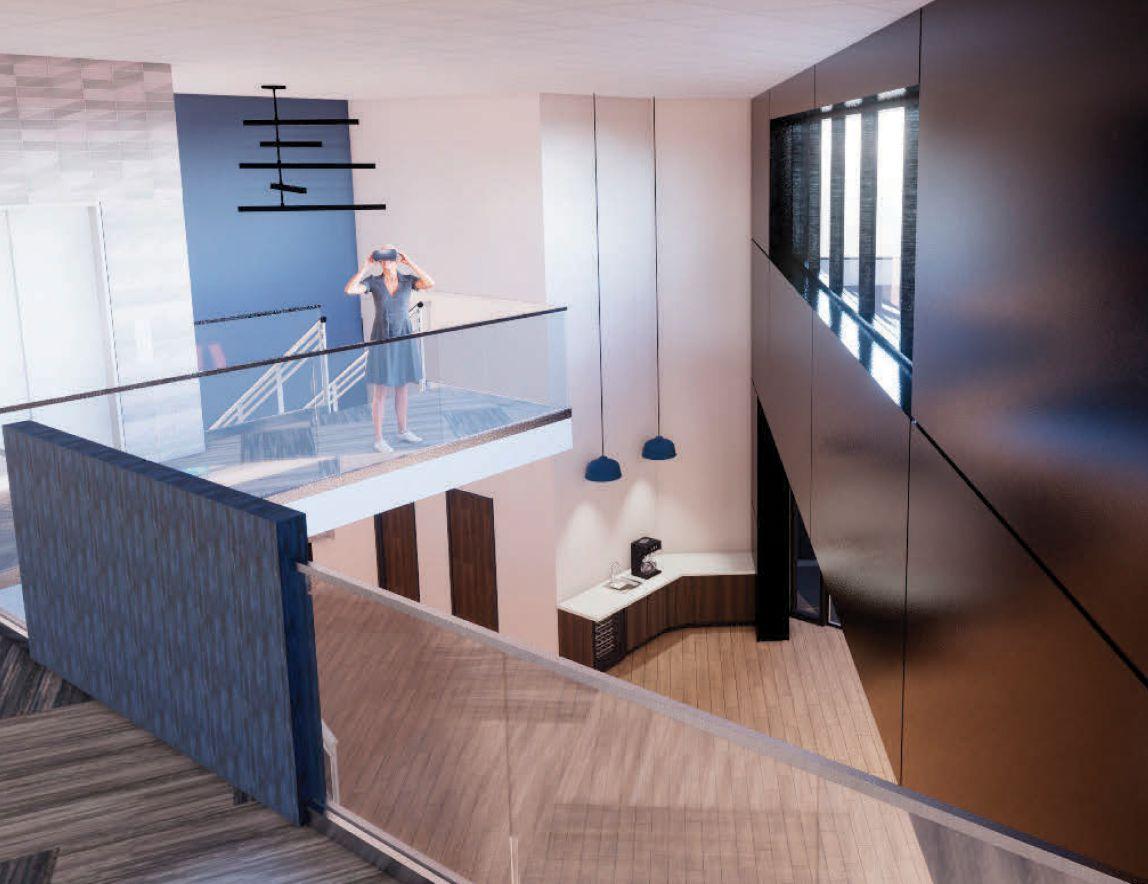









November is an unassuming month. It arrives every year with little fanfare, but it leaves with much aplomb as people hurry to the marketplace to do their holiday shopping.
That marketplace now exists in large part on the internet. Online purchases during the 2020 holiday season grew 32.2%, according to reporting by CNBC, and totaled some $188.2 billion. It was a record, set in part by more people shopping online because of the coronavirus pandemic. The report referred to data from Adobe Analytics, which tracks the web transactions of 80 of the top 100 internet retailers in the U.S. According to those numbers, e-commerce sales during November 2020, which included Black Friday and Cyber Monday, reached for the first time $100 billion.
“In another first, online spending exceeded $1 billion daily during the 2020 holiday season and 50 days topped $2 billion,” according to Adobe in the CNBC report.
Impressive numbers, indeed. It’ll be interesting to see what the numbers reach this year.
The decision to shop online or at local retailers is a conundrum for at least some people. Many shoppers still prefer to visit brick-andmortar stores, and it’s important to support local businesses. And yet a pandemic with a new variant still rages, making it uncomfortable for others to visit the local shops, especially during peak shopping season when sales run amok and more people flock to the stores.
As such, it is likely that e-commerce numbers will show impressive tallies once again.
In fact, according to Tim Sorbe, founder and CEO of Central Payments in Sioux Falls, S.D., e-commerce will continue to trend in the foreseeable future. That’s good news for his business, which deals in money transactions, much of it digital.

Even in the stores, he said, people are not using cash as much as they used to. That might be nothing new, but the pandemic has elevated people’s concerns about using paper money, which gets passed from one person to another.
More people are buying gift cards and using payment applications such as Venmo, “and all those things have really accelerated the speed of digital payments,” Sorbe said.
He sees a time when even credit cards might go the way of the dodo bird, as more online billing and payment methods are utilized.
Read more about e-commerce trends in our story about Central Payments. And, no matter the shopping preference, Prairie Business wishes our readers and partners the very best this holiday season!
As always, thanks for reading!
Andrew WeeksI look forward to hearing from you at aweeks@prairiebusinessmagazine.com or 701-780-1276.
CIRCULATION MANAGER BETH BOHLMAN
LAYOUT DESIGN JAMIE HOLTE
ACCOUNT MANAGER
NICHOLE ERTMAN 800.477.6572 ext. 1162 nertman@prairiebusinessmagazine.com
Prairie Business magazine is published monthly by the Grand Forks Herald and Forum Communications Company with offices at 375 2nd Avenue North, Grand Forks, ND 58203. Subscriptions are available free of charge. Back issue quantities are limited and subject to availability ($2/copy prepaid). The opinions of writers featured in Prairie Business are their own. Unsolicited manuscripts, photographs, artwork are encouraged but will not be returned without a self-addressed, stamped envelope.
SUBSCRIPTIONS
Subscriptions are free prairiebusinessmagazine.com
ADDRESS CORRECTIONS
Prairie Business magazine Box 6008 Grand Forks, ND 58206-6008
Beth Bohlman: bbohlman@prairiebusinessmagazine.com ONLINE www.prairiebusinessmagazine.com


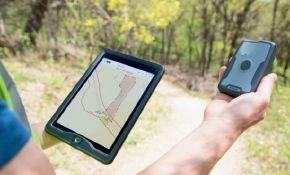
Usingthelatesttechnologiestodevelopinnovative designsolutions,providemaximumefficiency, andsupportthecommunity.







 MinnehahaCount yHighway Department Facili ty
LiDAR
Visualization
GIS
Pipe Crawler
Drone
3D Scanning
Architecture +Engineering +Environmental +Planning| ISGInc.com
Cherapa PlaceDevelopment
Sanford Spor ts Complex
MinnehahaCount yHighway Department Facili ty
LiDAR
Visualization
GIS
Pipe Crawler
Drone
3D Scanning
Architecture +Engineering +Environmental +Planning| ISGInc.com
Cherapa PlaceDevelopment
Sanford Spor ts Complex
Anymore when Dr. Karol Kremens reaches for a scope to biopsy a patient’s lung to check for cancer or other disease, it is one called the Monarch.
Kremens is a critical care and pulmonary medicine doctor at Essentia Health in Fargo. And while he approaches each procedure with the same careful attention to detail he has always practiced, the Monarch has enhanced the results.
The Monarch is a boon to lung cancer patients, he said, in part because it allows for earlier detection and more accurate diagnosis of small and hard-to-reach nodules in the periphery of the lung. With its farther reach the scope can, in essence, go where no scope has gone before to biopsy a lung.
Essentia Health started using the Monarch on Oct. 18. It is the first hospital in North Dakota to introduce the platform that has been approved by the U.S. Food and Drug Administration. Sanford Health in Sioux Falls, S.D., adopted the Monarch in August 2020 and started using it the following month.
Kremens said he and another doctor at Essentia had been trying to get the technology there for about a year, after it was first introduced in 2020. He said he is excited for what it will bring his patients.
Produced by Auris Health, the Monarch integrates the latest advancements in robotics, software, data science and endoscopy — the use of small cameras and tools to enter the body through its natural openings.


Kremens told Prairie Business that while there are other diagnostic options for lung cancer and other diseases, their limitations can lead to false positives, false negatives and, in some cases, cause side effects such as a collapsed lung or hemorrhage. In turn, these scenarios increase health care costs and extend hospital stays.
Also, more than 90% of people diagnosed with lung cancer do not survive the disease, according to information provided by Essentia, in part because it often is found at an advanced stage.
Modern ways to detect lung cancer have been by X-ray and CT scan, but Kremens said there remain challenges with these methods. By the time an X-ray can detect lung cancer, for instance, the patient usually is in Stage 3 or 4, diminishing the survival rate.

continued on page 14

continued from page 13
The CT scan can detect potential cancer earlier, which shows up as nodules in the lung, but the challenge has been to get to the nodule for a biopsy in a safe and reliable way. Usually that has been done with a bronchoscope -- a thin, lighted tube with a camera at its end to look at the airways. But the traditional bronchoscopes are larger than the Monarch, the scopes not as long, and often a needle is used between the ribs and lining of the lung to get to the nodule. The lung has few nerve receptors, but there’s a chance of puncturing the lung, causing it to lose air or to collapse.
Biopsies can be obtained, Kremens said, but at a cost to the patient. Many of those risks have been eliminated with the Monarch. For one thing, “the cameras are getting smaller and smaller,” Kremens said of advancements in medical technology. “We can go farther and farther (with the Monarch) without having to worry that we’re going to get stuck before we get to the nodule. And so this accessory improves the biopsy.”
Kremens may look as if he’s playing a video game when he watches a computer monitor while using the handheld controller that resembles one from an Xbox game console, but he’s not. He’s maneuvering the flexible robotic endoscope inside a patient’s airway and lung.
He receives help from the Monarch’s computer-assisted navigation and based on 3D models of the patient’s own lung anatomy. The computer will let him know if he is off course. Kremens said the system allows him continuous bronchoscope vision throughout the entire procedure.
As such, peripheral nodules can be diagnosed earlier — and via a minimally invasive procedure — allowing for more successful outcomes in the treatment of lung cancer. Kremens said it is an outpatient procedure and patients, if cancer is diagnosed, do not have to wait until Stage 3 or 4 to begin treatment.
There are a few weeks of training before physicians use the Monarch on a patient, but Kremens and his team went through the training with flying colors.

Dr. Paul Berger, who provides pulmonary, critical and neurocritical care at Sanford Health in Sioux Falls, was the first doctor to offer the Monarch service to patients in South Dakota. He said patients have come from near and far, sometimes from out of state, to visit with him for the outpatient procedure.
Berger was looking to upgrade the technology at his practice when he learned of the Monarch last year. He decided to invest in it, and the robot arrived in August 2020. A month later, after training, he started using it.
Since then, he’s seen the results time and time again: It is a much safer, more effective way at diagnosing potential lung cancer and other diseases, and, because the risk of collapsing a lung is lessened, it is not as invasive as previous methods.
“The Monarch platform is incredibly unique in the fact that it allows for enhanced reach to deal with lesions within the lung or within the airways, as opposed to a conventional bronchoscopy where you can really only see the first third of the primary airways,” he said. “You’d have to get ‘creative’ to be able to do more diagnostic procedures in the areas that you cannot visualize.
“The robotic bronchoscopy, however, allows for direct visualization of wherever I’m at in an airway, even near the visceral pleura, which is the outer lining of the lung. There are not very many areas within the lung I cannot get to for a diagnostic procedure.”
The scope itself is about 4.4 millimeters in width, he said. It is attached to two robotic arms, which feed the scope into the airways, maneuvered and controlled by the doctor.
“With a bronchoscope, that’s small,” he said. “It’s very easy to maneuver through even smaller airways. … That maneuverability within the airways is fairly straightforward, very safe, and incredibly easy.”
Berger said the Monarch is the only platform that allows him direct visualization during the entire procedure and allows him to get the scope to the target area “within a reasonable period of time” and safely do the biopsy.
The end result for patients: “We can give them a more expedient diagnosis so they can get premium therapies,” he said.
Cigarette smoking is the number one risk factor for lung cancer, according to the Center for Disease Control and Prevention, with smoking linked to between 80% and 90% of lung cancer deaths. Second-hand smoking also is a high-risk factor. Besides detecting cancer in patients at earlier stages, Berger said the Monarch can be used to detect other lung diseases. The best news, of course, is when a biopsy comes back negative.
“You don’t have to be a smoker to have lung cancer,” Berger said. “And cancer is not the only thing that I’m potentially looking at when I go through a diagnostic procedure.”
He said a patient may have infections, an autoimmune disease, or inflamed lung tissue that’s not cancerous.
“That’s what the task is — to go in trying to provide the patient with an appropriate diagnosis,” he said. In some cases proper diagnosis may bring the patient peace of mind, improve quality of life, and reduce health care costs.
They are Berger’s end goals, and with the Monarch those goals are better achieved “so we’re not inadvertently treating something that has not been appropriately diagnosed,” he said.
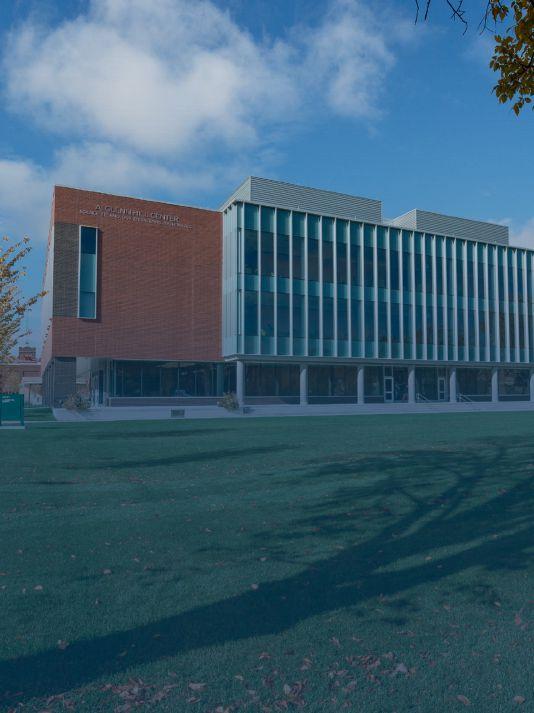
Perfectly designedtothriveinitsenvironment. Adaptableenoughtoevolvewiththetimes. Buildingsmar tfor asolidfuture.It’ssecond natureatKLJ.
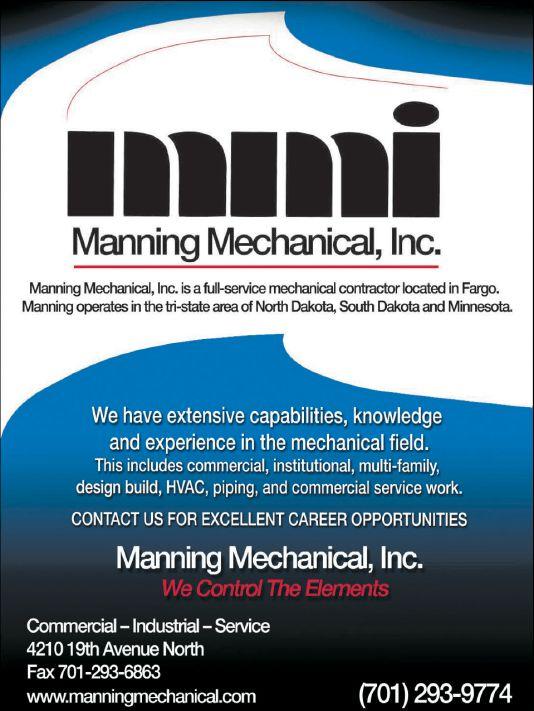
KLJENG.COM

TECHNOLOGY HAS BEEN TRANSFORMATIVE FOR ARCHITECTS AND DESIGNERS AS THEY CREATE PROJECT SAMPLES FOR THEIR CLIENTS. ANYMORE, THEY INCLUDE NOT ONLY IMAGES. NOW, CLIENTS CAN WATCH A VIDEO OF A THREE-DIMENSIONAL RENDERING OR EVEN PUT ON A VIRTUAL REALITY HEADSET AND STEP INSIDE THE SPACE. IMAGES: COURTESY OF EAPC

 By Sam Easter
By Sam Easter
Casey Hutton remembers architecture’s era of paint and charcoal drawings. It was decades ago, in what’s since receded into sepia-toned history — long left behind by giant leaps forward in architecture and design.
Hutton is an office manager and architectural project manager for EAPC, a sprawling engineering and design firm with offices sprinkled across the country. He’s been working in architecture since 2003, and things have only gotten better since the days clients got late-stage drawings of construction-to-be.
“The interesting thing — back then, that was usually something after things had been figured out and all nailed down,” Hutton said. “...we tried to only do it once.”
There have been years of changes since then, and the result has been transformative for architects and designers. Not only is it easier to pitch a prospective client, but it’s even become a kind of quality control, letting those clients watch a video of a three-dimensional rendering or even put on a virtual reality headset and step inside the space.


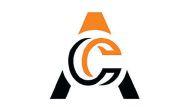


Now clients can see three-dimensional renderings early in the design process, and even step inside them and suggest changes with VR tech. Hutton says that means health care clients, for example, could even suggest changes in a surgical suite before a single brick has been laid.
Hutton shares a range of images that show what EAPC, and designers around the country, can now do. There’s open-air renderings of buildings and a wide public space, what looks like a high-tech hospital room and even a dollhouse view of a floor plan — a three-dimensional, bird’s-eye view of the interior structure of a building.
“As architects and designers here, the only thing we really produce is a set of drawings – which doesn’t have a whole lot of value outside the person that wants to build it,” Hutton said. “We sell ideas here. That’s what we get paid for — bringing our ideas in our thoughts to paper and eventually to life. The more we can convey that to an owner ahead of time, the more likely they are to enjoy it.”
Those changes go beyond building design. Joe DeVore, an associate project manager with the engineering firm KLJ, recalls the firm designing a traffic interchange in Bismarck with the North Dakota Department of Transportation. New tech, he said, means that firms can design multiple options for interchanges like those — that helps the public give better feedback or even point out design flaws engineers might have overlooked.
continued on page 18

continued from page 17
Images of some of those models look like scenes from a city-building video game, with delicate shades of green hills underneath layers of design and looping traffic patterns.
But there’s more. DeVore points out that traffic modeling tech helps engineers actually simulate traffic on interchanges like those, using data gathered from the community itself.
“In the past, you’d go out to an intersection with a count board, and hit buttons every time a car goes through an intersection. Now we have a lot of different options,” he said. That could be a video camera at an intersection collecting traffic data, government traffic studies and even “big data” from cell phones and GPS devices.
Vincent Caro is a senior digital designer with SEH. He points out that the coronavirus pandemic shifted the trajectory of all that technological progress a little. Some clients were suddenly less comfortable with VR headsets; that meant more emphasis on building spaces with video game engines and the like — one of the exciting frontiers in the future of rendering that includes 3D printing and more.
“What I discovered was the industry is continually providing these tools for engineers to make it easier for them to get into the 3D building space,” Caro said. “Building models and animating them and rendering them to make them realistic — it’s getting easier, it seems, every two or three years.”
That makes it an exciting time to be working with these kinds of renderings, Caro said. He’s relatively new to the field, with about three years with SEH; he recalls a high-detail bridge design that was a particular thrill to work on.

“A lot of these projects I’m really excited about, because I feel like I’m learning something new each time I do something,” he said.












Dr. Josh Behl spent about 20 years in business before refocusing his career. Now, after seven years at Minnesota State University, he still considers himself new to academia.
Behl is Dean of the College of Business, Analytics, & Communication, and in the time he’s been at the university he’s taken his expertise to the classroom and continued to forge relationships with the business community. In doing so, he’s learned about workforce needs in the region.
What he’s learned are things similar to what other colleges and universities are noticing with regard to workforce demands. Basically, employers want to hire people who are innovative thinkers and doers.
“What employers are asking for more and more is an entrepreneurial mindset,” he said. “They want people who are good problem solvers, people who take initiative.”
One of the reasons, he said, is because employers are seeing many of their long-time team members retire, those who have extensive institutional memory and experience. As the exodus continues, those workforce needs will continue to be elevated and, perhaps, shifted.
“Employers can’t expect everyone to have 30 years of experience. That’s just unrealistic,” Behl said. “And so the best they can ask for when they hire a lot of these students is to say they want someone with an entrepreneurial mindset. It comes down to how a person goes about problem solving, and taking risks, and identifying opportunities to be self-driven, to try to be a self starter. I think that entrepreneurial mindset encapsulates that quite a bit.”
A second thing many businesses are looking for these days are people who can “tell the story of data.”
“That’s a phrase I hear a lot from employers,” he said. “They want people who can look at a bunch of data, make sense of it, and then provide insights into what it tells them about their organization. What does this tell us about where we need to go, what we need to be doing, when to stop doing something and what we should continue doing?”
But there’s also a third thing employers want: people who are not intimidated by technology.
At Concordia College, also in Moorhead, the school’s business program is one of its most popular and continues to attract new students near and far every year.

Chris Mason, dean of the Offutt School of Business and an associate professor of finance at the college, said the school goes a long way in helping students develop the entrepreneurial mindset.
“We do not offer a major in entrepreneurship,” Mason said, but noting the school does have an entrepreneurial mindset certificate. “All students have to have an entrepreneurial mindset in the way they approach challenges and obstacles and not just in business.”
Thinking like an entrepreneur — being innovative and willing to consider ideas outside the traditional box — is something that will help students be successful not only in college but in their careers. Whether as a manager or supervisor, tackling problems for an employer, or starting one’s own business, it’s that mindset that elevates the experience and makes the challenges worthwhile.
Mason said about 40% of students in Concordia’s entry-level entrepreneurship program are non-business majors. It teaches leadership skills, allows students to think critically and creatively, and, because everything is not scripted for them, Mason said, how to problem solve.
Employers clearly want more “advanced quantitative skills,” he said. “For instance, marketing for decades has been mostly around general advertising and general promotions, but with technology it has developed the ability now to very specifically target a market and it is critical in that circumstance. In that case you need to understand marketing analytics. The need for a quantitative skill set in virtually all the disciplines has advanced over the past several years.”
Something similar is seen at North Dakota’s Minot State University, which has an entrepreneurial program and wants its students to think like an entrepreneur.
Dr. Artresa “Tracey” Mays, assistant professor of entrepreneurship and management in the Business Administration Department, helped start the program in 2018.
When the pandemic was declared, she patted her team on the back: They had been offering virtually classes a year before COVID-
19 hit the headlines. It was a good teaching lesson for Mays: She has to be innovative if she is to properly teach it to her students.
“That’s part of what I do as an instructor of entrepreneurship, talking about innovation on a daily basis,” she said. “But I can’t teach my students about innovation if we’re not doing it and we’re not showing them how to do it.”
When she saw some business struggle to go virtual, she said her students didn’t understand the challenge the businesses were facing.
“My students were like, man, we’ve been doing virtual for a year. What’s the problem?” Mays said. “It’s been interesting to see others not be able to respond well to trends or even businesses trying to figure out all of a sudden on March 15 what they needed to do.”
She said organizations fare better when they have entrepreneurial minds on board and who themselves are innovative, because when challenges arise they are better able to adapt to possible changes. In some cases, like her department, they may be ahead of the curve.
“But the ones that were slower to respond didn’t seem to have a culture of entrepreneurship in their organization and it showed,” she said.
Likewise, Mays is trying to stay ahead of workforce topics as she helps prepare students for careers in business, be that working for a small company or corporate entity or starting one’s own business.
Minot State also has a degree in management information systems, which Dr. Serena Pontenila, assistant professor with the Business Information Technology department, said is a popular and important program at the school.

“It’s a degree that leaves a lot of opportunity for people because it does allow for people to be more technical,” she said. Students learn about cybersecurity and database management, among other
things. “We face challenges, especially since last year, when we had to go fully remote. We use the same tools that industry is using, and now we’re teaching them as well. I have my undergraduate students on the same platform that I used in industry and I’m helping them develop and learn about best practices for using them.”
That fits well with what Behl mentioned he’s heard from employers about wanting people who understand data and are not being intimidated by technology.
“I think underneath (the surface layers) there is a deeper need around being able to learn new technologies,” he said. “One of the things that is happening in the workforce and in the world in general, as we all know, is the pace at which innovation and emerging technologies is moving. It is fast, in some disciplines faster than others. … And so to train a student on the latest emerging technologies is a big one. But the more important underlying skill is the ability to learn technology. It’s my belief that that’s actually a skill in and of itself, and you do that through getting exposed to technology. It’s the ability to say OK, here’s how I’m going to connect my previous experience to this new thing and make sense of it very rapidly.”
That’s what employers want, he said.
“I think this generation of students have been leveraging technology as a tool, but it doesn’t mean that they’re 100% well versed in it. I think they are primed to have the potential to be, to learn technology very easily if we in higher education can really direct them and give them the opportunity to do so.”
 By Andrew Weeks
By Andrew Weeks
DELL RAPIDS, S.D. • Trent Sorbe, CEO and founder of Central Payments in Dell Rapids and Sioux Falls, S.D., uses an analogy to describe his business. Different brands of toasters are on the market, he said, but no matter which one a person buys, it’s expected to do what any toaster is supposed to do: Make toast.
Similarly, “People have a lot of different ways to make payments, to move money around,” he said, noting his business is not the toaster, but the utility that makes the toaster work. “It’s our job to be the infrastructure, or utility, behind all those that connect to any (financial) application out there,” no matter what they use to make payments or transfer money.
Sorbe, who has been in finances and banking for 28 years, founded Central Payments in 2014 after officials at the Central Bank of Kansas City approached him, saying they wanted to figure out a way to continue to grow the bank, drive deposits, and do it in a way that stayed true to its mission. They didn’t want to drop branches in fluid areas of Kansas City, “which was not really true to the community bank’s neighborhood inner-city mission,” he said.
“They really looked at nationwide payments and fintech and all the things that are going on in this more digital financial services world and said, maybe that’s an area of growth for us. So, they reached out to me.”
Financial technology — or fintech — are applications that seek to improve and automate the use of financial payments. In short, Sorbe said, Central Payments leads the bank’s presence in the payments industry.
Today, there are three offices in South Dakota. Clients are from many parts of the country, and some are from around the world.
People are not using cash as much as they used to. That’s nothing new, of course, because credit cards have been popular for many years. But the pandemic has elevated people’s concerns about using paper money, which gets passed from one person to another. Nowadays, Sorbe said, many people don’t want to touch such items that easily carry germs.
“Perhaps the only good news out of the pandemic is that people have started to use digital payments more than ever before. Sometimes that’s because they’re doing much more shopping online, which has to be digital because no cash is moving online,” he said. “And then also, just from a safety and cleanliness standpoint, people are not using cash as much, and so there’s been a tremendous rise in digital payments.”
More people are buying gift cards, more people are using payment applications such as Venmo, “and all those things have really accelerated the speed of digital payments.”
But he sees a time when even credit cards might go the way of the dodo bird, as more online billing and payment methods are utilized.
“The days of plastics are going to feel like the days of check cashing,” he said. “It started with your cellphone, then it moved to your Apple Watch, but it’s only going to continue. There’s going to be a means to make a payment embedded in, I think, about everything that is electronic in your life.”
He mentioned the Internet of Things or IoT — a term used to describe physical devices connected to the internet — that also is primed to keep growing and, at least supposedly, make people’s lives easier. IoT is, in fact, powering a global revolution in the payments space, according to FinTech Magazine.
“The implications are astounding, and adoption is progressing at an incredible pace,” the magazine reported. As more devices go online, there are more means for digital financial transactions to take place.
Examples are more automobiles and household items connected to the internet, with the ability to make purchases from the devices. Underway are things like the future refrigerator that detects when a food item is getting low and purchases groceries to refill it.
A Business Insider magazine report in 2019 said there were an estimated eight billion IoT-enabled devices active around the world, but by 2027 the number could reach 41 billion.
That’s not a far-off tale but a reality that is coming, and in some areas it already exists. It’s doubly exciting for people like Sorbe, who works in the financial industry.
For starters, with continued digital transactions — and more devices to make them — it means job security for people in his line of work; but it also means the industry is doing exactly what it is meant to do: finding new ways to adapt and evolve with the times. To do otherwise is a frightening scenario he doesn’t even want to consider.


Sorbe said Central Payments is really about “money movement” in a “very white labeled environment.” Meaning, customers won’t see any CP logos on their credit cards, for instance, but it works behind the scenes to move the money.
As an example, he said, when a customer purchases a pair of contact lenses, there might be a refund attached to it. The rebate card might have a big-name brand on it, but it is Central Payments that is empowering that rebate card.
A main focus of the company is to make the financial experiences of its clients and customers better by striving to be compliant, fair and transparent. The company has a knack for tailoring implementation plans that fit with a business’s objective, revenue plans, and timelines.
Sorbe said South Dakota is a great place to keep his business, but who knows what the future will bring. Another office, perhaps?
One thing is for sure: digital transactions will only keep enhancing instead of diminishing in today’s internet-of-things world. And he’s happy about the continued role Central Payments will play in that world.
“When you go out and buy whatever, a toaster, once you plug it into the wall you know that it’s going to work, and that’s not that different from what our business is like,” he said. “It’s our job to be the infrastructure or the utility behind all those that connect to any application out there, no matter the toaster they’re using.”
Kara Welke has been an occupational therapist for more than two decades, but in recent years she has taken on the role of business owner, too.

time employees. She said her business has grown over the past three years.
“A lot of adults in our area, and in the state and nation, aren’t really getting the care they need, and they’re declining to the point where if they fall and have an injury or it gets too bad, then they have to move into an assisted living center or nursing home,” she said. “Our goal is to help keep them in their home.”
Welke said she and her team work with a number of business partners in the region, including, among others, the Alzheimer’s Association, Cancer Center of North Dakota, Grand Forks Clinic, and the TeleECHO geriatric program at the University of North Dakota.
After moving to North Dakota in 2004, she worked at Altru Health System in Grand Forks and later taught at Northland Community & Technical College in East Grand Forks. But she began noticing that some resources were lacking in the community to help older adults. That got her thinking, and soon she came up with a plan to start her own business. Home Therapy Solutions was born.
Welke, who started the business about three years ago, describes it as being not a home care service but a mobile outpatient clinic.
“We bring the outpatient clinic to people’s homes,” she said. She said it’s difficult for senior adults with health issues to sometimes make their medical appointments, nor is it always easy for their caregivers to shuttle them to and from doctor visits.
As the title suggests, Home Therapy Solutions is one solution to help fill the void.
“When I started teaching I realized that older adults really needed a lot more than what they were getting — and not just in our community but globally,” she said. “And I knew there was a big push for outpatient care as a whole, because older adults can’t get out to an outpatient clinic, or if they can, it’s a lot more taxing and harder for them to get there. Our goal is to help adults who live in their homes.”
Welke is based in Thompson, N.D., but her client base runs the gamut of the Greater Grand Forks region and, in some cases, farther. She has help from full- and part-

“That’s another great resource in our community that a lot of people have no idea even exists,” Welke said.
One frustration she has is that some of the larger health care names in the region do not, in her opinion, always do a good job of referring patients to places like Welke’s business, because they like to keep referrals in-house. But she believes, perhaps in part being a small-business owner but also because of what she saw years ago when she started her company, entities should work together.
“We are a community and all need to work together to take care of our older adults,” she said. “I guess they see us as competition, where we’re collaborating with any and all health care providers to try to do the best we can for the client. So that’s a struggle.”

ThePasekaSchool of Businessprofessors areexperiencedandknowledgeable, andIhave enjoyedtheirdifferentbackgrounds.Mybiggest mentorisDr. Mary Stone(Accounting). Shehas supportedand caredabout me as an individual andasa student.She’s pushed me to excelbysetting highstandardsandencouraging me in allthatI’ve done.”
–Brooke Pfeffer, Accounting’20,MSAccounting &Finance,’22
▸
We integrate smar ttechnologyandsophisticated thinkingintoevery projec twithdesign that makes themostofevery space.


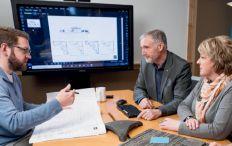

















Ulteigwork s inthe Li feli neSector s ofpower,renewableenergy , water, andtransportation,butourpassionliesinstrengtheningthecommunities weserve.Whetherit’s a new roadwayorwindfarm,substationorwater treatmentfacility,wetakeourcommitmenttoimproving,maintaining,and revitalizingessentialinfrastructure seriously.Becausewedon’tjustengineer sophisticated infrastructure solutions, wehelptobuild stronger, safer,cleaner, andhealthie r communities.






STARTYOURNEX T PROJECT WI THULTEIG

Anyone who has been around Katie Lorenson for any length of time becomes affected by her enthusiasm. The person leaves feeling a little better about the world, knowing it still has remarkable leaders who possess genuine interest in people and improvement.
In her new role with Alerus Financial Corp., she will have the opportunity to continue to influence others and effect change.
Lorenson, the company’s current executive vice president and chief financial officer, recently was named president and chief executive officer, effective Jan. 1. She will take the place currently held by Randy Newman, who will become executive chairman of the board of directors to help with the transition.
“Katie is a proven leader and seasoned executive with a deep
understanding and passion for our business,” Newman said in a statement. “Since Katie joined Alerus in 2017, she has been an indispensable strategic partner to me, our leadership team, and the board of directors.”
Newman said Lorenson has a proven track record of leadership and brings “relentless focus to executing our strategic plan and building our business, by attracting, retaining, and developing employees and growing the company. ... The company is well-positioned for continued success, and I have full confidence that Katie will continue to advance our company.”
In an interview with Prairie Business, Lorenson said things important to her are the well-being and professionalism of her employees, maintaining and deepening relationships in the community, and providing top service to the company’s clients and customers. She also expressed her views of women in leadership, diversity at the company, and her own journey to Alerus.

“I think about the future and I think about what’s on the goal list,” she said. “It is continuing to execute our strategy, growing our company, and really living our mission, which every day is impacting our clients positively through holistic advice and service, and engaging technology. I’m really looking forward to sustaining that and growing our company into the future.”
Lorenson grew up in the small town of Oklee, Minn., which impressed upon her mind at an early age the importance of the community bank. She said she saw its influence and impact firsthand.

“Where I grew up, the community bank was involved in everything, and certainly was the backbone to supporting the local businesses,” she said.
While a teenager she even landed a job as a teller at the community bank. Later, she studied accounting at Minnesota State University Moorhead and landed jobs with financial institutions of “various and different sizes,” she said. “During my interviews I specifically said that I wanted to work in the financial institution sector.”
The doors that opened for her gave her good experience for when Alerus came calling, which it did in 2017. She joined as the company’s executive vice president and chief financial officer. Previously, she worked as CFO for both publicly traded and privately held financial institutions in the region.
At Alerus she has led its business segments, including banking, retirement and benefit services, wealth management, and mortgage. She also spearheaded the company’s initial public offering in 2019 and has played an integral role in its achieving consistently strong financial results since it began trading on the NASDAQ in September of 2019.
“Having grown up in the area, I had long admired Alerus’ reputation in the community. And having been in the CFO role, part of that job is to understand other financial institutions and their
performance,” she said. “Alerus had long been at the top of the list in terms of consistent high performance; and there’s the diversified business model that drives that deep purpose to provide value to clients. Those things combined are what really sets Alerus apart and gives us an opportunity to continue far into the future.”
Lorensen said the financial arena remains heavily male-dominated, but there are improvements, especially at Alerus, whose board is nearly evenly split between male and female leadership. Continuing that balance is important to her, as are other types of diversity.
“I go back to our fundamental belief and our approach internally and externally is, we do the right thing, we cherish people and respect everyone, and we absolutely believe we can better serve our clients and our communities — and bring more value to our employees and our shareholders — by incorporating diverse perspectives,” Lorenson said. “Having said that, it’s an ongoing topic of conversation for us. It’s an issue throughout the entire financial industry. No one has the answers, but we are focused on finding ways that we can make sustainable and impactful changes.”
Her early journey into and around the financial arena was only one path; there are others that people with the same interests can take. As a female leader in a male-dominated profession, she shares this perspective:

“I think the challenge is balancing both personal and professional. Balance doesn’t really exist, and so I believe it’s working hard and doing the right thing, but also giving yourself grace. Some days you’ve got to go all in professionally, and some days you’ve got to go all in personally. ... I continue to believe that’s a challenge for all professionals. Women have definitely been confronted with that challenge in this industry, and so have others.”
continued on page 28
 By Andrew Weeks
By Andrew Weeks
Loffler Companies, a Minneapolis-based company that provides integrated business technology and services across the Midwest, celebrated the grand opening of its new Fargo office in October.
President James Loffler said the company is excited to expand the Fargo market and looks forward to developing partnerships and growing the office team. To start, it will house about 30 employees.
The company is leasing the building, which Loffer said is a regional sales, service and distribution center. The company held a grand opening on Oct. 7.

Loffler said the opening of the new facility is a perfect way for the company to celebrate its 35th anniversary.
Jim and Darcy Loffler started the company in 1986, selling dictation equipment out of their garage. Fast forward to today, where Loffler said it has grown to be the largest privately-owned business technology company in the upper Midwest, providing technology solutions to organizations of all sizes.
In total, the company has 15 offices in six states — including Aberdeen and Sioux Falls, S.D. — and more than 500 employees.
Its offerings include IT services, data and network security, cloud solutions, unified communications, business security systems, copiers and printers, managed print services, document management and workflow software, and onsite people-based services.
Loffler, who works out of company headquarters in Minneapolis, said he expects to grow the Fargo team as regional demand and sales grow.
“Fargo is one of our core focuses for 2021 and 2022 from a strategic standpoint as we expand to new markets,” he said. “We’re excited about the market. We’ve made some acquisitions in the market, we’ve invested in the new headquarters. We think it’s a good market from a value alignment standpoint for a Midwest company with family values.
“If you read our mission statement, part of that is exceeding the expectations of our employees, our partners, our customers and our
continued from page 27
Lorenson is primed to continue to give it her all, and recognizes the legacy work of her predecessor.
Newman, who will transition to his new role, started with the company in 1981 when it was still known as First National Bank North Dakota and has made his own mark at Alerus. He became president in 1987 and chief executive officer in 1995. Under his leadership, Alerus successfully navigated the flood of 1997 in Grand Forks, the Great Recession in 2008, and, more recently, the ongoing COVID-19 pandemic.
He expanded the company outside of North Dakota and entered into new business lines of retirement, benefits and payroll services, which resulted in a long-term expansion that includes 24 acquisitions and the evolution of Alerus into a diversified financial services
community. We’ve been very successful focusing on those things throughout the last 35 years, and we think it’s repeatable in Fargo. “We think part of that is, like Minnesota, there’s a great group of folks there that have a great value system and appreciate a company like Loffler that will provide them with a great experience. And that’s how we differentiate ourselves.”
company. Among other awards during his career, Newman was a 2020 Prairie Business Leaders & Legacies recipient.
With Lorenson at the helm come January, however, Alerus will remain in good hands — in part because of her infectious personality and thoughtful ambitions, but also because of her proven track record of successful leadership.
She said she looks forward to her new role. Likewise, she is excited to be part of an organization that is bigger than herself and, as a vehicle to impact people and businesses, makes a difference in the communities it serves.
“I am truly humbled to have this opportunity to lead our team,” she said. “I spent my entire career in this male-dominated industry and it’s an honor to serve as an example for the younger women out there, just to show that if you do the right thing and work hard, anything is possible.”













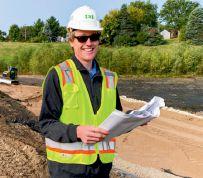

EAST GRAND FORKS, Minn. • Luke Sellner chose a career path as an electrician because, for one thing, he doesn’t want to make a career of sitting behind a desk all day.


But there’s another reason: He’s learned there is high demand for electricians, not just regionally but across the country.
“So I am thinking I could probably get a job just about anywhere,” he said.
Sellner, originally from Hudson, Wis., is a student at Northland Community & Technical College in East Grand Forks, Minn., majoring in construction electricity. He keeps busy between his studies and serving as the campus’ student senate president, a position he was elected to this past summer. It has helped him hone his leadership skills, something he believes will serve him well once he enters the workforce.
Careerwise, there are two options he is considering: Working with electricity in the commercial sector or the residential. He currently is leaning toward residential, but that could change. He said during his first year he worked on more residential projects, but this year his studies are focused more on commercial.
“This year I’m just going to figure out which one I like more,” he said.“I guess I still haven’t done enough work in the field to know what I want to do for sure.” Still, he said he’s learned a lot since starting school and is not shy about admitting what he doesn’t know.
“I basically came into this with little experience, and so it’s all been pretty new to me,” he said. “Everything I’ve learned is basically new
to me, besides that electricity gives you light.”
When starting out, a new electrician is often an apprentice first, he said.
As a second-year student, Sellner said his instructors have many years of professional experience under their belts and have been extremely helpful.
Something else he enjoys is the hands-on projects he gets to participate in from time to time, including a recent project wiring electricity for a house.
Sellner explains why, in his opinion, the trades are important to pursue today: “It is really important. We depend on electricity so much right now and have for a long time. And if you’re looking for the money, it’s there. You just have to find the right spot to do it. There are plenty of jobs to go into. It’s not like you have to go back to school for four years to get a business degree or whatever; you don’t have to do that. You can go into the trades, (attend school for a year or two), get a job as soon as you can and start going up in the ranks.”
That remains his plan.
“Basically, at least right now, my plan is to get going on (a job) and see where it goes from there” he said. “I want to do this until, well, hopefully until I retire, which is a long way away, but that’s my plan so far.”
According to the U.S. Bureau of Labor Statistics, electrician jobs are expected to grow about 9% until 2030, with 84,700 openings projected each year, on average, over the next decade. A number of those openings will be the need to replace workers who retire or change occupations.




“We need as many people in the trades as we can; trades will always be around no matter what technology is out there,” said electrician and Northland instructor Rick Simon. “People will always need buildings to work out of and to live in (and) these buildings need to be maintained by the trades people.
Simon said Sellner is a quiet, dependable student. He works hard and stays on task — good qualities to have in the trades.
“I want my guys to leave here knowing they got the best I can give them,” Simon said. “I want them as ready as possible … to go out and work for contractors such as myself or other contractors. I also want them to have the ability to work with other trades on the jobsite.”
Sellner said he believes with the training he is receiving at school, he will be ready for an adventurous career in the trades. He offers this advice for others who may be considering a similar path.
“Try to get into a job as soon as you can and put in the work that you learned in school,” he said, explaining he plans to land a job soon. “It’ll help you a lot, so do that if you can. And don’t go too hard on yourself. It takes a while to figure things out. ... It’ll come to you if you just keep practicing.”

BISMARCK, N.D. • The Bismarck Motor Co., which has been in business for nearly 70 years, is opening two new facilities in Mandan, N.D.
The dealership, which sells Hyundai and other vehicle lines, will begin renovations in December of the vacant properties at 805 and 905 East Main Street in Mandan. The facilities will be a new Hyundai dealership and a detailing center.

According to the company, the property at 905 East Main will receive a complete exterior and interior remodel, including seamless glass windows, an extended bronze facia, an air conditioned shop and a new parking lot. The location will offer new Hyundai vehicles, pre-owned vehicles, service and parts operations.
The 805 East Main property includes demolishing a section of the current building, adding a new entrance, windows, exterior remodel, air conditioned shop area and office space to the remaining building. The space will be utilized as Bismarck Motor and Hyundai of Mandan’s detailing facility, currently located in south Bismarck.
The dealership will also offer windshield replacement, paint corrections and dent repair.
“We’re extremely excited to expand the BMC brand and our services to the Mandan community,” owner Chris Schneider said in a statement. “This Hyundai dealership is the newest release and design for Hyundai dealerships nationwide, and Hyundai has some big things going for their brand. We’re proud to give Hyundai a stand-alone facility and make Mandan its home.”
The facilities, designed and built by Darwin Lindahl Architects and H&R Construction, plan to open for business in late spring 2022.
According to Shanielle Ulmer, digital sales and marketing manager for Bismarck Motor, the company has had challenges during the pandemic but it hasn’t prevented it from expanding. She said it also tries to find ways to serve the community.
“We’ve been very fortunate throughout the pandemic,” she said. “We were able to keep our entire staff throughout 2020, which was a big thing, and we’ve been able to take care of our employees and take care of our community a little, too.”
Something the company did that it’s proud of: “We did a program during COVID, where we put $25,000 back into our community by buying gift cards from locally owned businesses,” Ulmer said. “And then we forwarded those to health care workers. We worked through some of our local hospital foundation programs to make sure they were given to the frontline heroes that are battling a lot of this on a day-to-day side. We were also again able to support the local businesses that really needed assistance at that time to keep their doors open.
“We knew we were able to take care of our employees and then we just knew that the next thing was to take care of our community, because that is what’s most important to us as well.”
As for vehicle sales, she said vehicle manufacturers have gone through some shutdowns but having other brands is really good for the company. When one brand might be selling poorly, for whatever reason, another brand might be selling well.
“That’s kind of something that we’ve been really fortunate with,” she said.
And, Ulmer said, the dealership initiated something during the pandemic that it plans to keep doing in the years ahead: Offering vehicle purchases online and delivering them to customers.
It also started a program called BMC Buys in which the dealer buys vehicles from people.
“We’re buying a lot of cars off the street,” Ulmer said. “That’s been really helpful to us, and we’re able to take care of our guests in a different way — not only selling cars to them but buying cars from them.”
ALIGNED VISIONS. SUSTAINABLEPROJECTS.ABET TERWORLD
DRINKING WATER. WASTEWATER TREATMENT. WATERRESOURCES




WithSEH, youare atrue partner and collaborator.
WithSEH, youare atrue partner and collaborator.
Ascommercialsalesmanager,JenniferGuthmillerleadsateam dedicated to matchingeachcustomer’s uniqueneedswiththe right toolsandservicesfortheirbusiness.

Call Jennifer todayat 701-323-3035 to scheduleafreeconsultation.
Withmorethan42,000milesof fiberacrossthestate, DCNandits14ownercompaniesoperateNorthDakota’s most robust fiberopticnetwork.

Essentia Health welcomes family medicine physician
FARGO, N.D. • Dr. Eric Jacobson, a family medicine physician, is excited to welcome new patients at the Essentia Health-52nd Avenue Clinic in Fargo.
Dr. Jacobson was raised in Bowbells, N.D., and received his medical degree at the University of North Dakota School of Medicine and Health in Grand Forks and completed his residency in family medicine at Altru Health System in Grand Forks.
He said he was drawn to family medicine based on the personal connections, saying one of the most rewarding aspects of his work is creating connections with patients and their families as they change and grow, from welcoming a new child to end-of-life care.
New member appointed to KLJ Solutions Holding Co. Board of Directors
BISMARCK, N.D. • Jennie Krause, KLJ Engineering’s director of project management, has been appointed as an internal director for the KLJ Solutions Holding Co. Board of Directors. She will serve a three-year term.
Krause, who joined KLJ in 2006, is a professional engineer in North Dakota and Wyoming and has served on the executive committee for the North Dakota Association of County Engineers, as well as the three-year ACEC-ND leadership program, Emerging Leaders Institute. She is a past recipient of the Prairie Business 40 Under 40 award, as well as a past participant in KLJ’s previous Leadership Development Program and Leadership Commission.

Krause earned a degree in civil engineering from South Dakota School of Mines and Technology.
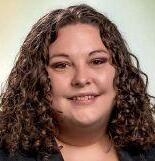
Essentia Health hires family medicine physician
MOORHEAD, Minn • Dr. Kiesha Onyeneho, a family medicine physician, is excited to welcome new patients at the Essentia Health clinic in Moorhead, Minn.
She said the reason she chose family medicine is in the name — she loves taking care of the whole family, from babies to the elderly, taking care of people through all those stages in life.
Dr. Onyeneho received her medical degree from the University of North Dakota School of Medicine and Health in Grand Forks and completed her residency in family medicine at Prevea Health in Eau Claire, Wis.
FARGO, N.D. • Dr. Stephen Humble has joined the emergency medicine team at Essentia Health-Fargo.
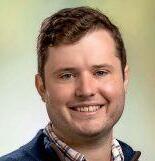
He said his goal is to treat every patient he encounters with the same care and compassion as he would his own family. Dr. Humble received his medical degree from the University of Tennessee Health Science Center in Memphis, Tenn.
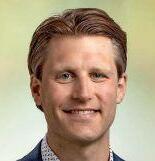
SIOUX FALLS, S.D. • Alternative HR, LLC, a 30-year-old human resource consulting firm based in Sioux Falls, has expanded.
Sarah Meusburger, who has been with the firm for six years, recently relocated to expand consulting services to Minnesota. Meusburger has nearly 20 years of experience within human resources, is a published writer, and has been active with community and statewide initiatives in the past.

She works with clients from all industries in strategizing their search for talent, retention and engagement efforts, compensation analysis and planning, and all other human resource services and support. She also is trained in Title IX intake and investigation.

BISMARCK, N.D. • North Dakota Information Technology has a new chief customer success officer: Evonne Amundson.


Amundson, currently a business analyst manager, brings 14 years of experience in IT operations leadership, focusing on the voice of the customer and improving the customer experience through technology.
She has led multi-disciplinary teams in the development of products and alignment of technology solutions, including modernization and automation strategies. Amundson will be responsible for ensuring the appropriate integration of technology into business processes to ensure agencies perform at an optimal level. She holds a Bachelor of Accountancy from the University of North Dakota.
FARGO, N.D. • Murali Vegi joins Apex Engineering Group as a senior engineer in the Water Resources Group.
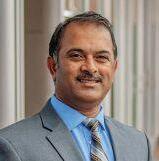
He has 15 years of engineering experience and is located in the Fargo office.
Murali holds a master’s in both civil and environmental engineering. Most recently, he worked at EVS as a water resources group leader.
BISMARCK, N.D. • KLJ Engineering has welcomed Rachel Poitra to its West Fargo, N.D. office. Poitra joins KLJ as a structural engineer. She graduated from North Dakota State University in Fargo with bachelor’s degrees in civil engineering and mathematics education. She has more than 14 years of experience in structural design.
What do you do to inspire others while keeping yourself inspired about your organization and its mission?

 Sandman
Sandman
Our inspiration comes from the ability to impact so many people’s lives by being registered structural engineers in all 50 states and Canada. We have the opportunity to reach so many clients to help them achieve their goals.

Our mission at SSE is “To enable the success of our clients and our team.” Internally we talk about who our projects impact and what their real meaningful purpose is. Our projects provide anything from housing, to providing power to a community, retail for commerce, manufacturing for production of food or goods, and anything in between. The structures we engineer provide the safe environments that change the world in each unique way.
Our mission inspires me, and I continue to be inspired as we grow and mentor our young talent to continue that mission and instill in them the inspiration of how we positively impact the world. Our true rewards come from creating growth and development of people while helping them achieve their career goals, all while making a greater impact on our society.
Dakota Wesleyan University’s core values of learning, leadership, faith and service allow those of us who work and study at DWU to be inspired nearly every day. Wherever you look on campus — in classrooms and labs; at clinical sites; in the practice room or on the stage; on the playing field or in the training room — you will find examples of students, faculty, coaches and staff learning and leading.
Faith is the college’s foundation and service to others is what we aspire to practice. I encourage anyone who is looking for inspiration to take time out of a busy day to help someone. A cup of coffee, a well-deserved compliment or a listening ear can often be exactly what is needed.
It is my hope that I lead by example and that those around me will do the same as we educate a new generation.
Theresa Kriese Interim President
Dakota Wesleyan University
Mitchell, S.D.HDR is a very entrepreneurial organization. For us it is not about conforming to a set role with a predefined path but embracing the ability to understand what your role is and define your own success. This brings excitement to our professionals as they grow in the organization, knowing their success is based on bringing fresh perspectives and new ideas to fulfill their roles and best serve our clients at the highest level.
My goal is to provide mentorship at various levels in our organization to prepare and empower our professionals for their career growth. I encourage all our staff to build their own individual brand; encouraging them to not only be recognized as an HDR professional but be recognized for what they do specifically to make HDR a great company.


As a leader for HDR in our Dakotas and Wyoming market, our vision and mission has been and will continue to be to think globally but act and service our clients locally. We bring together the right people for each individual client to create engagement and provide the highest level of teamwork. When we work together with our clients and collaborate, we are at our best.
Jason Kjenstad, PE, VP Area Manager/ Vice President HDR Sioux Falls, S.D.
At Dance Elite, our mission is: “The best dancers, and even better humans.” All our families are well aware that we are instilling more than just dance instruction – we’re teaching life lessons along the way.
One way we inspire is by living our motto. We do everything we can to help develop wonderful humans to go out into the world. We donate the cost of our trophies at competitions to Toys for Tots, get out in the community to perform, and also have policies in place to hold our employees and students accountable. We are all responsible on social media, outside of our organization, and to each other. We have a team/ family environment that works well and shows when we are anywhere.
We also study the latest styles, attend furthering education classes, and bring new things to our clients daily. Just like any organization that has “projects,” we have families that we get to watch grow. Creation with our students is the best part of our job and keeps us constantly inspired!
Total nonfarm payroll employment rose by 194,000 in September, and the unemployment rate fell by 0.4 percentage point to 4.8%, according to the U.S. Bureau of Labor Statistics. Notable job gains occurred in leisure and hospitality, in professional and business services, in retail trade, and in transportation and warehousing. Employment in public education declined over the month.
Source: U.S. Bureau of Labor Statistics
Source: U.S. Bureau of Labor Statistics
Thus far this year, monthly job growth has averaged 561,000. Nonfarm employment has increased by 17.4 million since a recent trough in April 2020 but is down by 5.0 million, or 3.3%, from its prepandemic level in February 2020.

Men accounted for about half of all employed people in 2020, but about three-fourths of workers in protective service occupations were men. Among protective service occupations, nearly all firefighters (95.6%) were men. Men also accounted for large shares of employment in first-line supervisors of police and detectives (87.3%), police officers (82.9%), security guards and gambling surveillance officers (75%), detectives and criminal investigators (73.6%), and first-line supervisors of correctional officers (72.3%). Women accounted for 45.4% of private detectives and investigators, the largest share among protective service occupations.
Source: U.S. Bureau of Labor Statistics
The total nonfarm quits rate increased 0.2 percentage point to 2.9% in August, the latest numbers available, the highest since data were first collected in December 2000. The number of quits rose by 242,000 to 4.3 million.

Prairie Business magazine would like to THE SPONSORS of our annual awards ceremony in September 2021.










We appreciate your partnership and enjoyed celebrating with our 40 Under 40, 25 Women in Business and Leaders & Legacies award recipients and guests.

Thank you for helping to make our event a success!

Reconnect with your health .

Schedulingawellnessv isit is asimple,eas yway to take careof your self.
Whetherit’sface– to –faceorv ir tually,we’re commit tedtoprovidingthe rightcare foryou.We’lllisten,assess how you’re doing andget youbackontrack .
Take sometime to come andseeus —because it ’s always good to reconnec t.